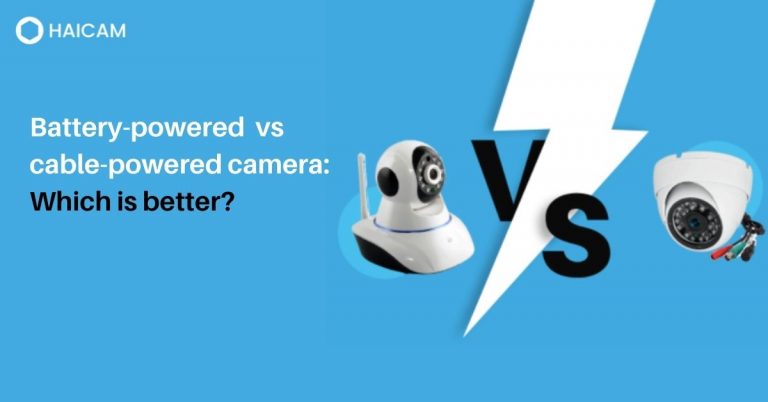Battery-powered camera vs cable-powered camera: Which is better?
Recently, digital cameras have been developed and sold to replace film-based cameras. However, the price of these devices is increasing day by day. The next problem that comes to mind is how long it takes to charge the battery and operate the camera. If you have not come across any issues yet, you will have to deal with them soon enough.
Some advantages of the battery-powered (wireless) camera:
- Portable: The battery-powered camera can be easily transported and used even without an outlet.
- Durable: A battery-powered camera is more durable than an electric one. It can take more abuse and last longer.
- Low cost of ownership: batteries are not as expensive as electricity, and they don’t need to be replaced often, if at all.
- Reusable Batteries: Using rechargeable batteries in your cameras can help save on inventory for batteries and the stress of battery drains.
- No noise: A battery-powered camera doesn’t emit gaseous noises, as it does with traditional cameras or compact flash cards.
They do not harm the surrounding environment like other recording systems may have done in the past that resulted in pollution and deforestation of our planet due to excessive greenhouse gases emission.
Some disadvantages related to battery-powered (wireless) cameras
- Easy to lose: due to compact batteries, it is easy to lose them unless they are tied with a cord since we can’t rely on batteries alone, and being away from home means having no access to power at all times.
- Slow charger: the reflectors in these cameras take a relatively long time to charge up and turn on, unlike others on the market which can “shock” the batteries into getting charged.
- Battery life: A typical camera battery lasts between 300 and 400 shots depending on capacity, model, and usage.
- Termination: A large battery pack will draw from your camera due to the high current. In extreme cases, it can damage or ignite this output, which is also unsafe for working with electrical equipment and fires instantly if left on indefinitely due to overheating.
- Environmental concerns: Battery-powered cameras create pollution due to manganese dioxide and graphite batteries, which are toxic to the environment when dumped.
Some advantages of cable powered (wired) cameras
There are a few advantages of using a cable-powered camera over a battery-powered camera.
- You do not have to worry about whether or not the battery is still working. With a cable-powered camera, you simply plug it in when needed, and it will start filming.
- Another advantage is that you can shoot longer videos than a battery-powered camera. With a cable-powered camera, you can usually go for up to 48 hours with the entire battery pack.
- Also, the cable electrically powered camera can prevent getting caught in an electrical fire or short-circuiting due to being run through batteries. If you operate it for long periods and bounce around between different rooms shooting, this adds up to overcharging, so there are added advantages.
Some disadvantages of cable powered (wired) camera
- Battery life can be shorter when using a cable powered camera over a USB powered camera.
- Cable might be difficult or impossible to use in some environments and some different countries.
- Users need to beware of cable overheating when too long and placed in hot areas. Overheated cables have proven to cause electrical fires.
- Cable might be difficult or impossible to use in dangerous environments, including cold places or combat zones.
- Cable wires can also destroy the state of the art equipment if an accident occurs when they are too close. It even poses more damage than batteries in some cases where one wire gets stuck and touches another, which causes a short circuit.
The Bottom Line
The significant difference between a battery-powered camera and a cabled-powered camera is that the former uses the energy generated by its internal batteries. In contrast, the latter uses an external power source. Please check out our blog post if you want more information about this topic.
